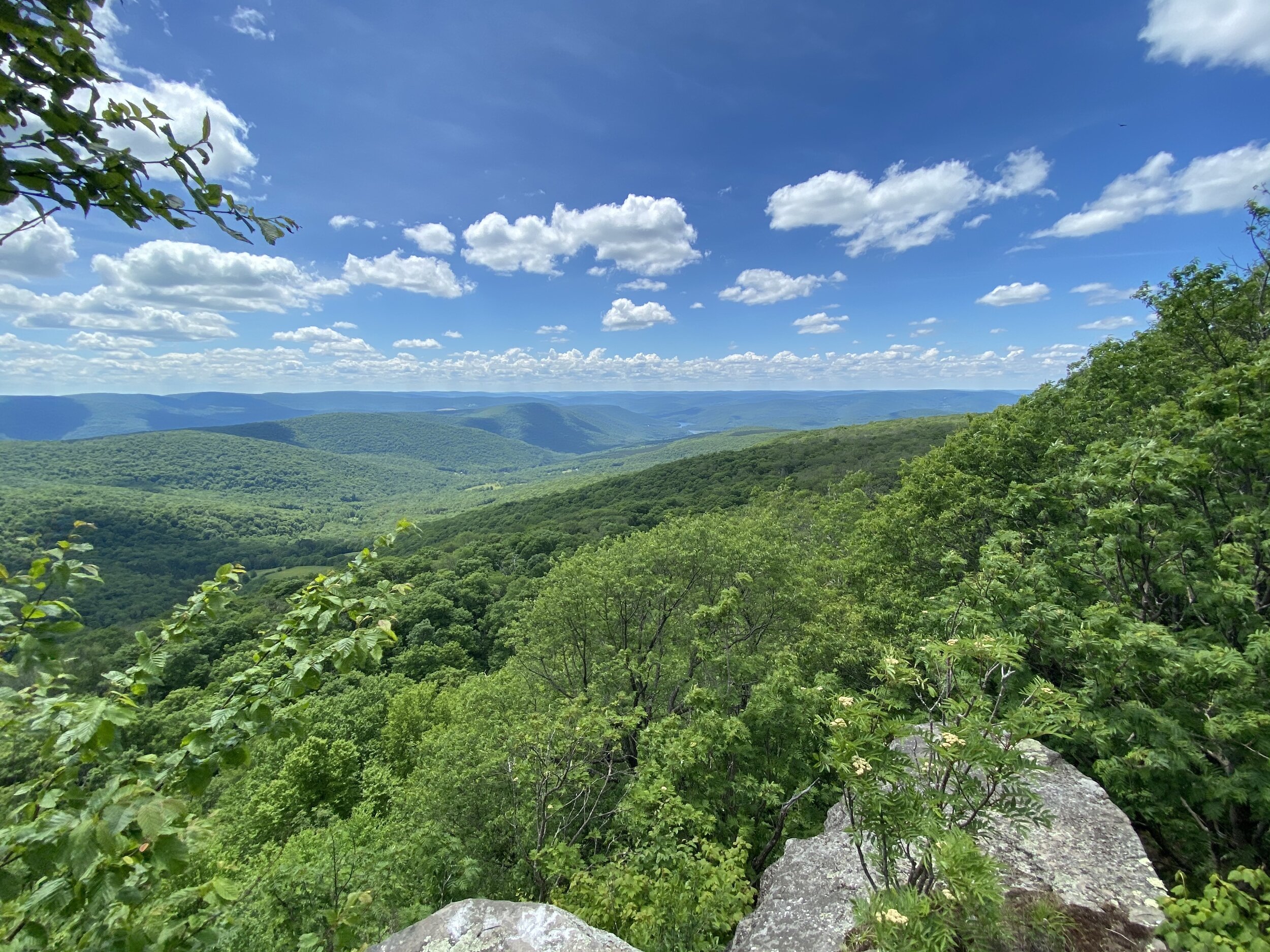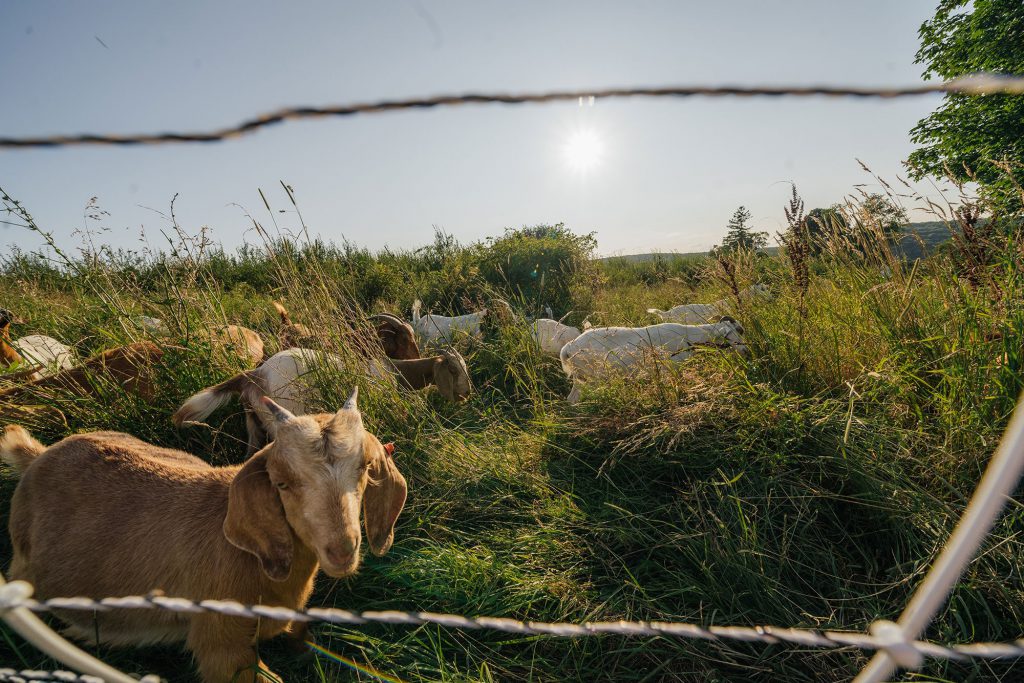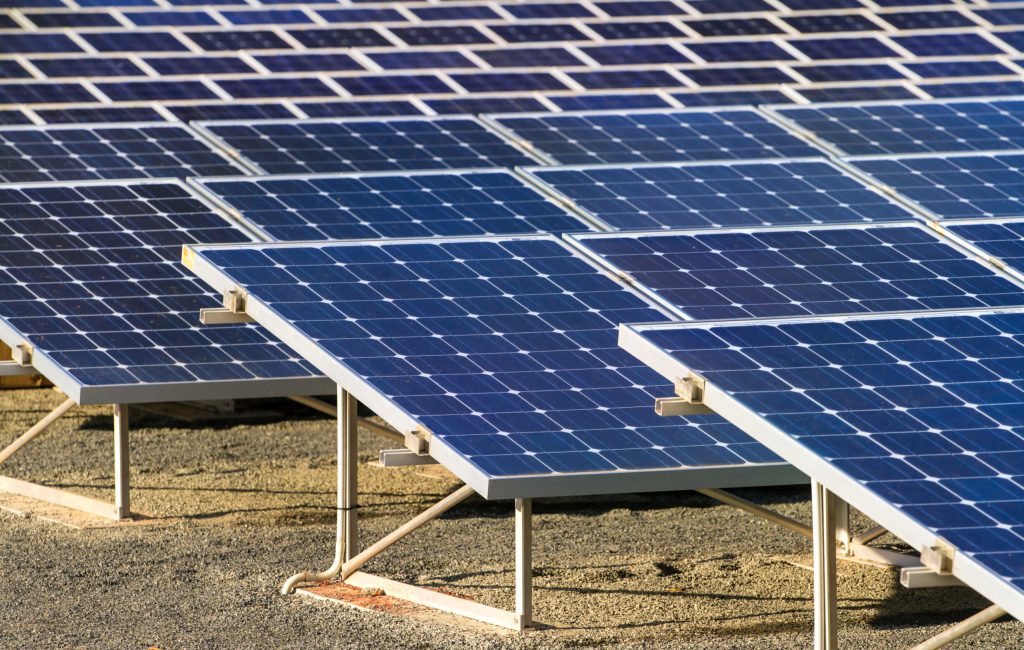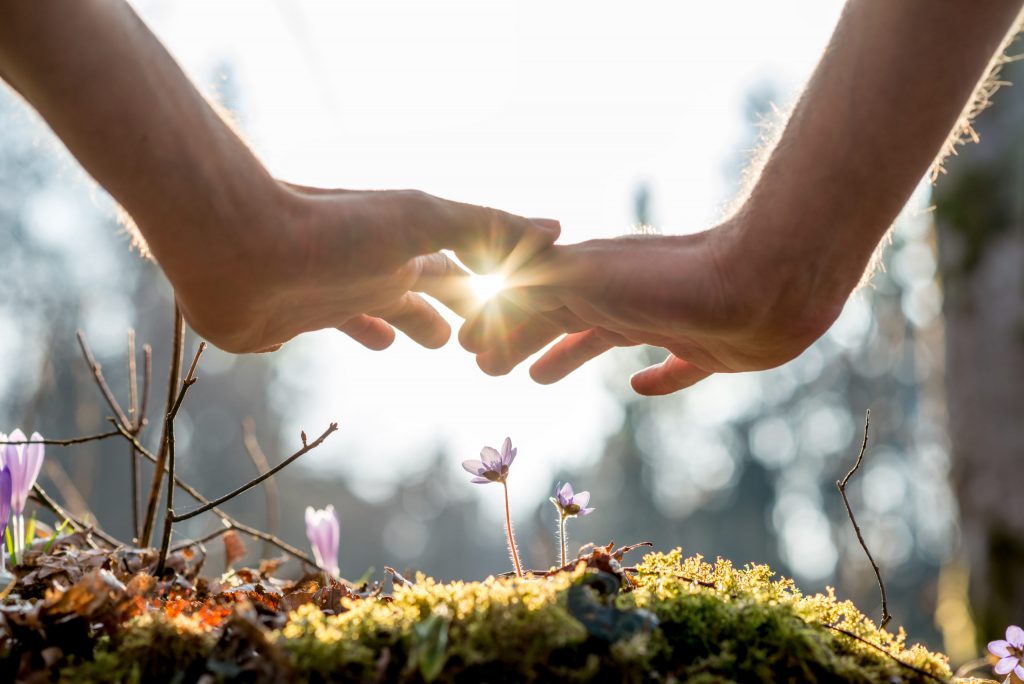This is the third post in our Community Climate Champions series highlighting individuals and organizations building a better future for their neighborhoods. In this edition, we focus on Repair Cafe Hudson Valley.
In this edition of our Community Climate Champions series highlighting individuals and organizations building a better future for their communities, we focus on the Catskill Center.
Few things are more rewarding than finally reaching the summit of your hike. The last quarter mile or so seems to last an eternity. You know the view at the top will be magnificent, so you keep going. When you finally reach your destination and rest your legs, you’re greeted with a scene of clear blue sky, rolling green hills, valleys, and rushing water.
With incredible views, over 300 miles of hiking trails, and 700,000 acres of land, New York’s Catskill Mountains attract about 12 million annual visitors. The mountainous region also plays host to diverse wildlife, ski resorts—and 90% of New York City’s water supply (you heard that right).
With all these unique hallmarks, it’s clear that the Catskills have a lot to offer tourists, local residents, and the state’s economy. A region of such importance requires a dedicated team of advocates and volunteers to maintain it. Enter: the Catskill Center.
Founded in 1969, the Catskill Center is the oldest environmental organization in the Catskills. It handles virtually all facets of protecting the beautiful landscape—including educating and guiding visitors, controlling invasive species, preserving the land, and ensuring that the water is suitable for 9 million New Yorkers to use every day.
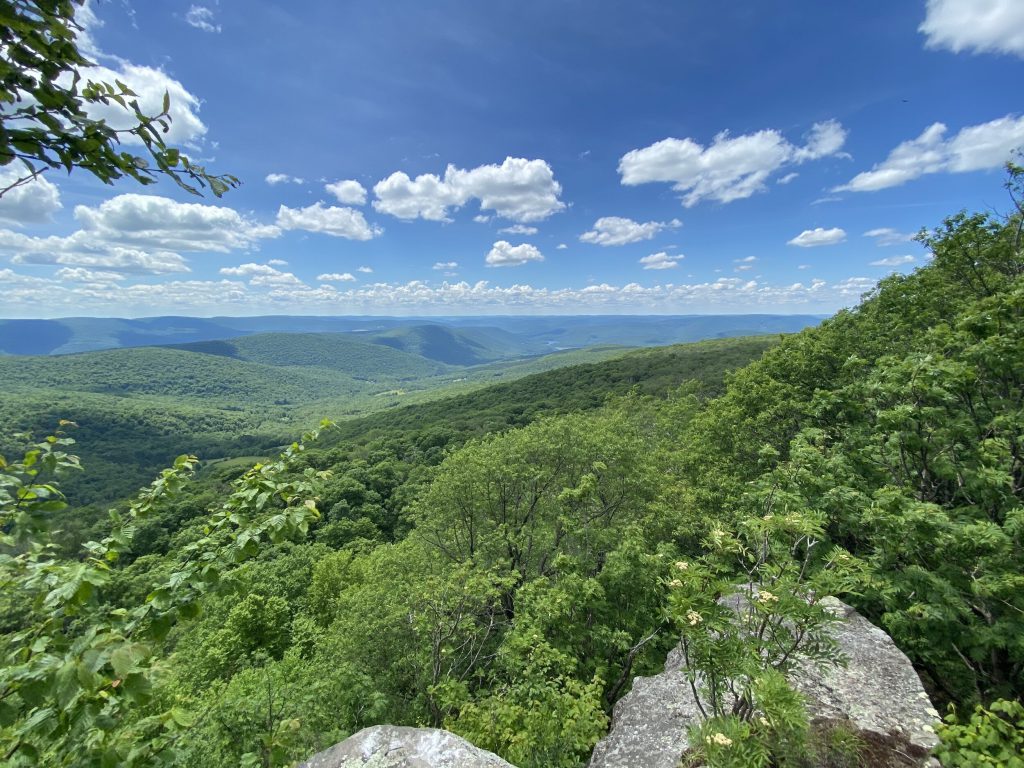
Table of Contents
Environment & Economy Go Hand In Hand
The Catskill Center was founded on the principle that economic and environmental prosperity go hand in hand. In today’s political climate, it can seem as if these two are at odds. The staff at the Catskill Center, however, understand that a healthy environment is absolutely essential to economic prosperity.
“It’s sort of our founding idiosyncrasy,” Catskill Center Executive Director Jeff Senterman told us, “The Catskill Center was born with the idea that what’s good for the environment is also good for the economy and for maintaining local culture. One can’t go without the other in this area.”
People travel from all over to hike, fish, ski, and experience the natural beauty of the Catskills. In fact, tourism in the Catskills alone contributes $115 million to New York’s economy each year. Ensuring the prosperity of visitors, wildlife, streams, and lands are critical to maintaining (or growing) these revenues.
Here are a few of the ways the Catskill Center does it all–for the environment, the economy, and the Catskill culture.
The Lifeline of NYC
The Catskill Watershed is quite literally the lifeline of New York City. It contains water for 8 million urban and 1 million suburban residents. The Catskill Center works to maintain the Catskill watershed and ensures that its water remains uncontaminated.
Quick definition: a watershed is any land from which water drains into a larger body of water. Technically, we all live in a watershed–which one depends on your local water sources, and some are much bigger than others. Situated within hundreds of trails, lush forests, ski mountains, and scenic lookouts, the Catskill Watershed stores many, many tons of water.
As the largest unfiltered watershed in the U.S., it sends about 1 billion gallons of water through a labyrinth of tunnels to the City every day. Without clean drinking water, public health can collapse, and keeping 9 million people healthy is an essential duty. Fortunately for New York City, its water supply consistently wins taste tests and is internationally known for its superior quality.
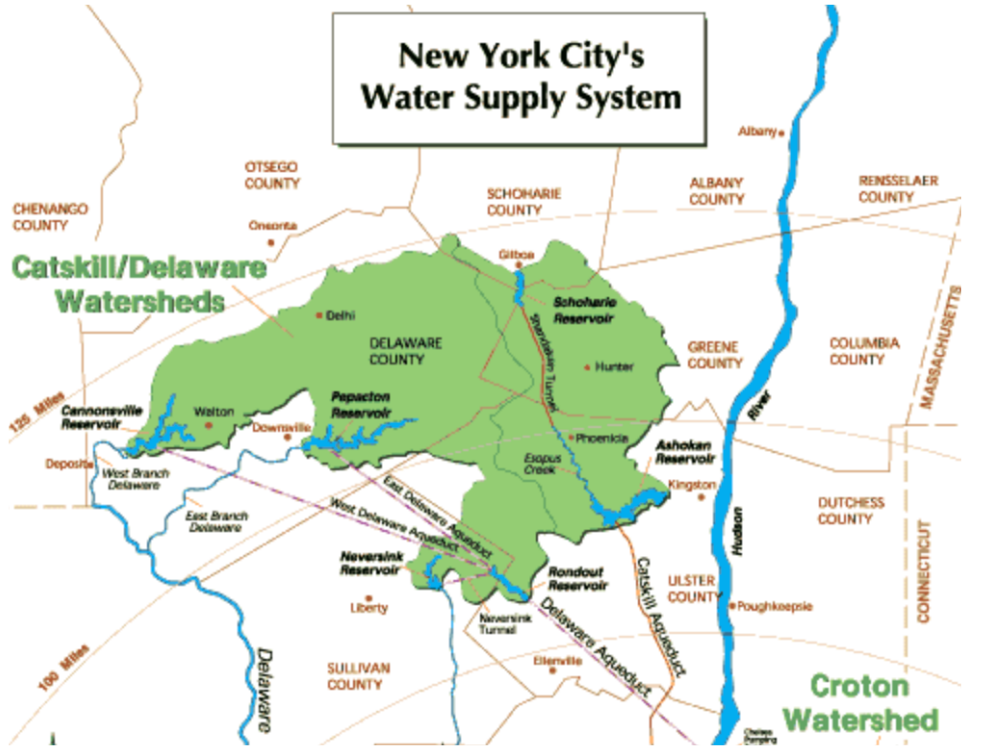
NYC.gov
Pretty remarkable, right? “It’s a modern engineering marvel,” Jeff told us, “The tunnel that goes from newer reservoirs to reservoirs in Westchester then down to the City is the longest in the world—and all gravity-fed.”
Testing the Waters
How exactly does the Catskill Center help manage this huge water supply? The first step is making sure that New York City controls streams, reservoirs, and the land alongside them in order for the water to remain unfiltered and untouched by chemicals.
That’s why the Catskill Center started the state-funded Streamside Acquisition Program (SAP), in partnership with NYC, to “protect the streamside, forested lands and floodplains that are essential to maintaining Catskill streams’ excellent water quality.” Under SAP, the Catskill Center is responsible for acquiring privately-owned streamside land at fair-market prices to pass on to City ownership.
Catskill Center employees work with volunteers to provide educational opportunities with the water of their local stream. The Streamwatch program empowers students and other community members by teaching them how to test the water and ensure that it is safe to drink. Catskill Center employees teach groups how to test the water and provide them with water sampling kits and equipment. Streamwatch participants learn how to collect and test biological, chemical, and physical data.
Teaching local residents and visitors to the value of stream protection creates a culture of care toward the environment and protects against future contamination. Preserving our natural resources is truly a team effort, and the better equipped we are to do so, the better off we’ll all be.
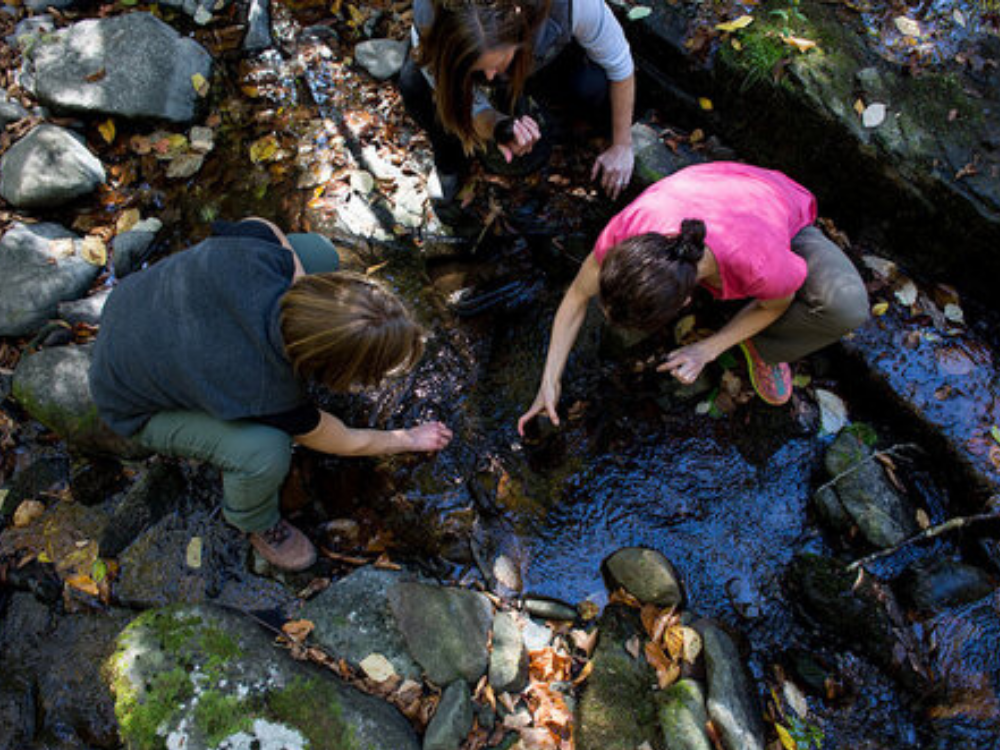
Catskills Visitor Center
Opened in 2015, the Catskills Visitor Center was the result of 30 years of effort to create a central visitor interpretive center for the Catskill Park. Today the Visitor Center functions as the gateway to the Catskills and is the Catskill Park’s official visitor center.
The Catskill Center operates and manages the Visitor Center in partnership with the New York State Department of Environmental Conservation. The Visitor Center makes a great first stop in the Catskills. The friendly employees offer the information, maps, and advice you need to have an adventure in the Catskills. In addition to the Visitor Center, the site features more than a mile and a half of walking trails, an 80-foot fire tower, and picnic spaces.
Protecting Visitors & Ecosystems
Early detection and control of invasive species are two of the Catskill Center’s main responsibilities. If not controlled, invasive species–any foreign species introduced to a new region–can transform entire ecosystems by wiping out native species that are essential to maintaining the existing environment.
The Catskill Regional Invasive Species Partnership (CRISP) works to identify and control invasive species that jeopardize natural resources and human health. The Catskill Center encourages visitors to take photos of potentially invasive species and identify them using iMap, an online invasive species detection database.
Perhaps the most pivotal invasive species success story in the Catskills was when biologist Erie Coe noticed a water chestnut on the bottom of a visitor’s kayak as it was about to enter the Canadarago Lake and was able to stop it before it went in. Although the visitor did not realize it at the time, Eric’s actions prevented a crisis that would have taken years to quell. This fast-breeding species may seem harmless, but it depletes waters’ oxygen levels, which would eventually kill aquatic life.
Moments like these show how fragile our ecosystems are and how important it is to protect them. That’s why the Catskill Center encourages visitors to clean, drain, and dry all watercraft, burn local firewood, and report any invasive species sightings.
The Catskill Center Stewards play a fundamental role in making sure that visitors respect nature and each other. First-time visitors are encouraged to stop by the Visitor Center for maps, trail guidance, and advice. For the visitors’ and wildlife’s best interests, Stewards ensure that visitors follow the Hiker Responsibility Code and the 7 Principles of Leave No Trace.
In 2018, the Catskill Stewards began monitoring the trails to guide visitors, answer questions, and ensure that visitors were following the “leave no trace” protocol. The Catskill Center Stewards program is known to be one of the best around and is even supported by REI.
Of course, the Catskill Center Stewards also play an instrumental role in the economic prosperity of the region. Maintaining trails and guiding visitors contributes to a better experience in the Catskills, which in turn creates increased tourism revenue.
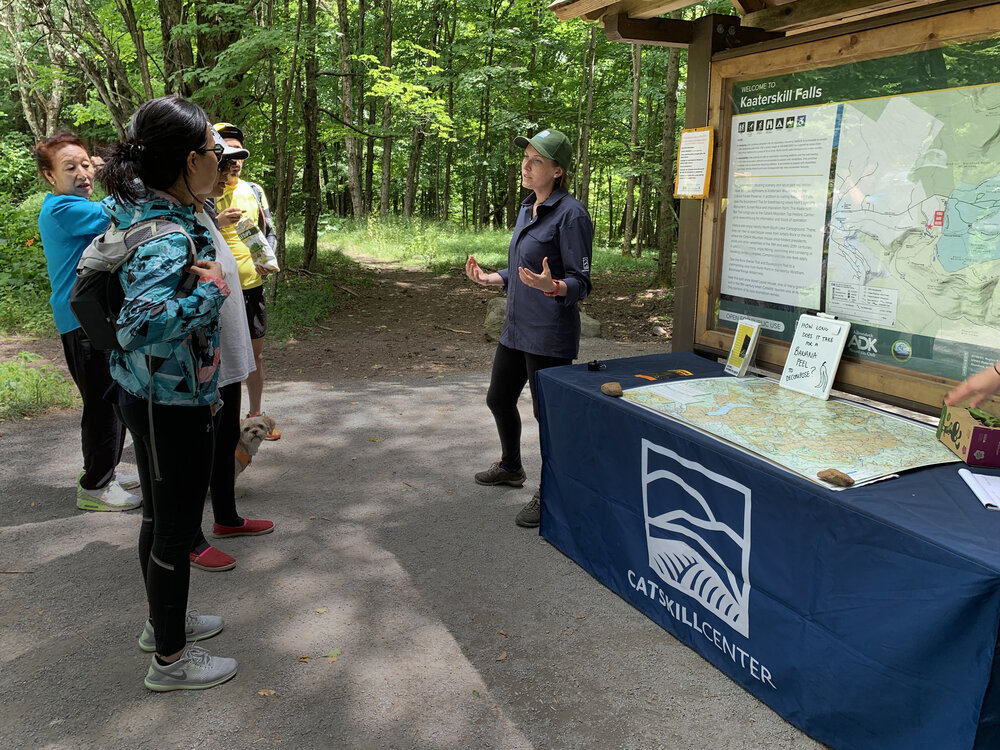
COVID-19 response
Ensuring the health and safety of the Catskills’ visitors is a top priority for the Catskill Center. Staff and Stewards have been taking precautions by canceling all in-person events, sanitizing surfaces, ventilating indoor spaces, and wearing personal protective equipment when the job requires working with the public.
Stewards can still talk to visitors at a distance, but only those within driving distance are encouraged to visit. Camping areas and some indoor areas are closed. Visitors are also encouraged to play it safe so as to avoid injury that could require a doctor’s visit or hospitalization.
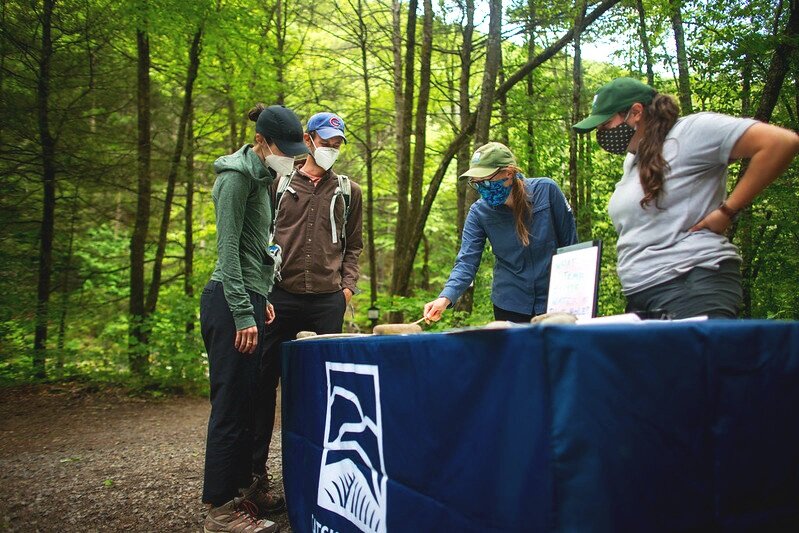
The Catskills Visitor Center has reopened to the public with a walk-up window in place of services inside the building. Visitors once again can talk, face to face with Catskill Center staff and get all of their Catskill questions answered, along with having the opportunity to get tourism guides and make purchases of trail maps and other resources from the Visitor Center’s gift shop.
It’s plain to see that the Catskill Center plays a crucial role in protecting and maintaining the Catskill region. From protecting wildlife to guiding visitors to bolstering the economy, the Catskill Center team has their hands full.
The next time you visit New York, try out the tap water and consider paying a visit to the Catskill Visitor Center to take advantage of all the natural wonder of the Catskills. “I’ve traveled throughout the country and there’s something about the Catskills that always calls back to me,” Jeff says. “There’s a certain sense of place you get in the Catskills that you don’t get anywhere else.”
Like learning about community solar?
Join our monthly newsletter to hear about more renewable energy news and bold climate challenges.
